| Sacundin Ben Samba | ||||
|---|---|---|---|---|
 | ||||
| Studio album by | ||||
| Released | 1964 | |||
| Genre | Samba [1] | |||
| Label | Philips | |||
| Producer | Armando Pittigliani [2] | |||
| Jorge Ben chronology | ||||
| ||||
Sacundin Ben Samba is the second album by Brazilian singer-songwriter and guitarist Jorge Ben, released in 1964.
| Sacundin Ben Samba | ||||
|---|---|---|---|---|
 | ||||
| Studio album by | ||||
| Released | 1964 | |||
| Genre | Samba [1] | |||
| Label | Philips | |||
| Producer | Armando Pittigliani [2] | |||
| Jorge Ben chronology | ||||
| ||||
Sacundin Ben Samba is the second album by Brazilian singer-songwriter and guitarist Jorge Ben, released in 1964.
The album is stylistically very similar to Ben's debut Samba Esquema Novo , although the rhetoric of protest music, inspired by the likes of João de Vale and Zé Keti and found in such songs as "Não desanima João", "Jeitão de preto velho", and "A princesa e o plebeu" sets it apart from its predecessors. [3]
| Review scores | |
|---|---|
| Source | Rating |
| Tom Hull – on the Web | B+ ( |
Along with Ben's first two records, Sacundin Ben Samba was described by Will Hermes as the "blueprint for much of modern Brazilian pop." [1] Music critic Rodney Taylor, who was critical of the previous album, said Ben "rights himself ... with the bigger band arrangements fleshing out his sound rather than drowning it." [5]
All tracks written by Jorge Ben, except where noted

Samba is a name or prefix used for several rhythmic variants, such as samba urbano carioca, samba de roda, recognized as part of the Intangible Cultural Heritage of Humanity by UNESCO, amongst many other forms of samba, mostly originated in the Rio de Janeiro and Bahia states.
Bossa nova is a relaxed style of samba developed in the late 1950s and early 1960s in Rio de Janeiro, Brazil. It is mainly characterized by a calm syncopated rhythm with chords and fingerstyle mimicking the beat of a samba groove, as if it was a simplification and stylization on the guitar of the rhythm produced by a samba school band. Another defining characteristic of the style is the use of unconventional chords in some cases with complex progressions and "ambiguous" harmonies. A common misconception is that these complex chords and harmonies were derived from jazz, but samba guitar players have been using similar arrangement structures since the early 1920s, indicating a case of parallel evolution of styles rather than a simple transference from jazz to bossa nova. Nevertheless bossa nova was influenced by jazz, both in the harmonies used and also by the instrumentation of songs, today many bossa nova songs are considered jazz standards. The increase in popularity of bossa nova has helped to renew samba and contributed to the modernization of Brazilian music in general.

Francisco Buarque de Hollanda, popularly known simply as Chico Buarque, is a Brazilian singer-songwriter, guitarist, composer, playwright, writer, and poet. He is best known for his music, which often includes social, economic, and cultural reflections on Brazil.

Jorge Duílio Lima Menezes is a Brazilian popular musician, performing under the stage name Jorge Ben Jor since the 1980s, though commonly known by his former stage name Jorge Ben. Performing in a samba style that also explored soul, funk, rock and bossa nova sounds, Ben has recorded such well-known songs as "Chove Chuva", "Mas, que Nada!", "Ive Brussel" and "Balança Pema". His music has been interpreted by artists such as Caetano Veloso, Sérgio Mendes, Miriam Makeba, Soulfly and Marisa Monte.

Skank was a Brazilian pop rock band from Belo Horizonte. Having begun in 1991, they sold approximately 5,200,000 copies of their albums as of 2004. Initially intending to mix dancehall with traditional Brazilian styles, later the band changed its sonority to music closer to Britpop and local movement Clube da Esquina. Their last concert was held on March 26, 2023, at Mineirão, in Belo Horizonte.
Samba rock is a Brazilian dance culture and music genre that fuses samba with rock, soul, and funk. It emerged from the dance parties of São Paulo's lower-class black communities after they had been exposed to rock and roll and African-American music in the late 1950s.
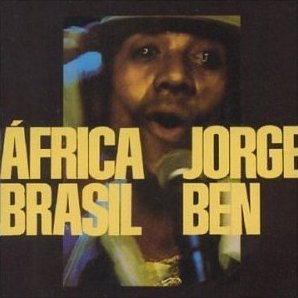
África Brasil is a 1976 release by Brazilian artist Jorge Ben. It was Ben's 14th studio album. África Brasil represented a milestone in Ben's career with his switch to electric guitar and incorporation of both Afro-Brazilian and American funk music styles into his sound. África Brasil is one of Ben's best-known recordings. Rolling Stone Brazil listed it as one of the 100 best Brazilian albums in history, and it was included in both Robert Dimery's 1001 Albums You Must Hear Before You Die as well as Tom Moon's collection 1,000 Recordings to Hear Before You Die.

Elza da Conceição Soares, known professionally as Elza Soares, was a Brazilian samba singer. In 1999, she was named Singer of the Millennium along with Tina Turner by BBC Radio.
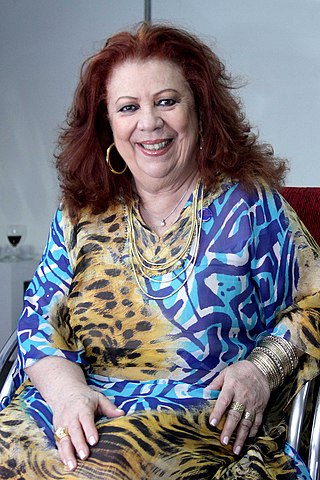
Elizabeth "Beth" Santos Leal de Carvalho was a Brazilian samba singer, guitarist, cavaquinist and composer.

Elizeth Moreira Cardoso, was a singer and actress of great renown in Brazil.
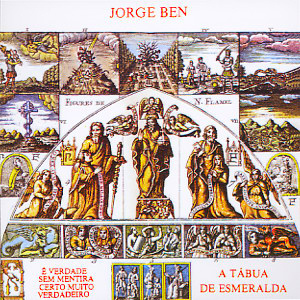
A Tábua De Esmeralda is the 11th studio album by Brazilian singer-songwriter and guitarist Jorge Ben. It was released in 1974 by Philips Records.
Tonico e Tinoco were a Brazilian música sertaneja duo from the state of São Paulo, composed of brothers Tonico and Tinoco, they are regarded among the most famous and prolific artists in sertanejo. With their first hit single, "Chico Mineiro" (1946), they were named "A Dupla Coração do Brasil". They performed more than 40,000 times between 1935 and 1994, recorded more than 1,000 songs and sold over 150 million albums despite never performing outside of Brazil.

Samba Esquema Novo is the 1963 debut album by Brazilian singer-songwriter and guitarist Jorge Ben. It includes the original recording of the international hit "Mas que Nada".
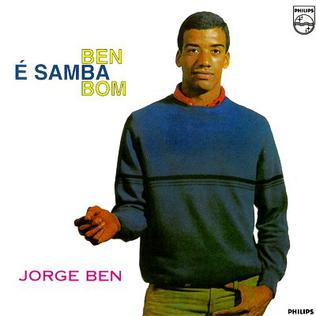
Ben É Samba Bom is the third studio album by Brazilian singer-songwriter and guitarist Jorge Ben, first released in Brazil in 1964. It was reissued in the United States by Philips Records in 1967, under the title Big Ben Strikes Again.

Gil e Jorge is a 1975 album featuring collaboration between Brazilian musicians Jorge Ben and Gilberto Gil. The two perform together alongside percussionist Djalma Corrêa on each of the songs, improvising and interacting directly throughout. The album was released in Brazil under the title "Ogum Xangô" with a different cover.

Big Ben is the fourth album by Brazilian singer-songwriter and guitarist Jorge Ben. It was released in 1965 by Philips Records, his last for the label until Jorge Ben in 1969.

O Bidú: Silêncio no Brooklin is the fifth studio album by Brazilian singer-songwriter and guitarist Jorge Ben. It was recorded with Brazilian rock band The Fevers as Ben's backing musicians and released in 1967 by Artistas Unidos, a small-market record label based in São Paulo.
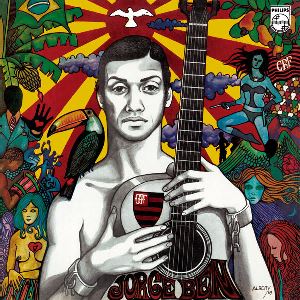
Jorge Ben is the sixth studio album by Brazilian singer-songwriter and guitarist Jorge Ben. It was released in November 1969 by Philips Records. The album was his first recording for a major label since 1965 when his first stint with Philips ended due to creative differences.
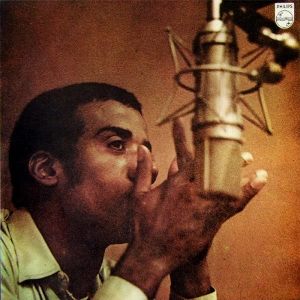
Fôrça Bruta is the seventh studio album by Brazilian singer-songwriter and guitarist Jorge Ben. It was recorded with the Trio Mocotó band and released by Philips Records in September 1970. Conceived at a time of political tension in dictatorial Brazil, its title comes from the Portuguese term meaning "brute force" and has been interpreted ironically due to the music's relatively relaxed style.
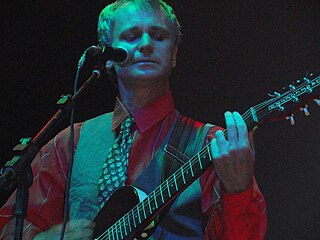
Marcelo de Campos Velho Birck is a Brazilian singer-songwriter, lyricist, arranger and guitarist, best known for his work with influential rock band Graforreia Xilarmônica.